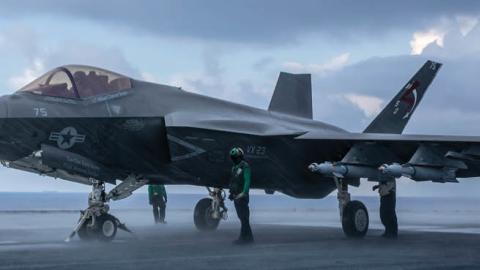The U.S. Navy and Marine Corps face growing challenges ranging from China and Russia to regional threats such as Iran and North Korea, all of whom seek to undermine their neighbors’ stability and revise geopolitical relationships in their favor. Despite the impact of the COVID-19 pandemic and resulting economic downturn, each of these potential adversaries continued to improve its military capabilities, especially the number and reach of precision missiles able to strike U.S. allies and slow or prevent intervention by U.S. naval forces. Supported by commercial and military surveillance networks in every domain, weapons located on adversary territory are capable of threatening U.S. and allied ships, troop formations, and aircraft hundreds of miles away.
U.S. naval aviation risks sliding into irrelevance unless Navy and Marine Corps leaders embrace organizational and investment changes that would enable more effective operational concepts against peer adversaries. To support the approaches, naval air forces will need greater reach, adaptability, and capacity, which this study proposes to address by changing the composition of carrier air wings and repurposing aircraft based ashore or on surface combatants and amphibious ships.
Rebalancing naval aviation primarily involves force management, supported by additional procurement or modification of existing aircraft and payloads. This contrasts with prevailing Navy and Marine Corps plans, which sustain the existing force with minimal improvements while prioritizing development of next-generation capabilities. Not only does this approach fail to address the urgent nature of Russian and Chinese threats, but it also perpetuates the Navy’s expectation that revolutionary new capabilities will fix problems that demand tactical, organizational, or adaptive technical solutions. That strategy failed to deliver in the cases of the Littoral Combat Ship, Zumwalt-class destroyer, and Ford-class carrier. The F/A-XX program for a sixth-generation air superiority fighter-even if successful-is unlikely to transform naval aviation but could consume resources needed to address peer adversaries during the next decade.
The shortfalls facing naval airpower against the People’s Republic of China are significant, but not insurmountable. Analysts have pronounced the death of the aircraft carrier several times since the end of World War II, but by exploiting its adaptability and mobility U.S. naval forces could remain relevant against peer opponents despite the emergence of long-range sensor and precision weapon networks. However, achieving the reach and capacity necessary to counter Chinese aggression in the Indo-Pacific will depend on carriers focusing on the mission only they can do sustainably and at scalelong-range counter-air and strike warfare.
Navy and Marine Corps leaders have an opportunity to substantially improve the ability of maritime airpower to influence events in the Indo-Pacific. However, rebalancing naval aviation will require overcoming cultural, organizational, and programmatic hurdles. As described in this report, the necessary changes are possible and affordable, but only if naval leaders embrace the urgency of their challenges and do not continue to hope they can continue to push their problems-and solutions-out into the future.
**Correction: A previous version of this report gave the wrong range for the UTAP-22 Mako and RQ-58 Valkyrie.**



















